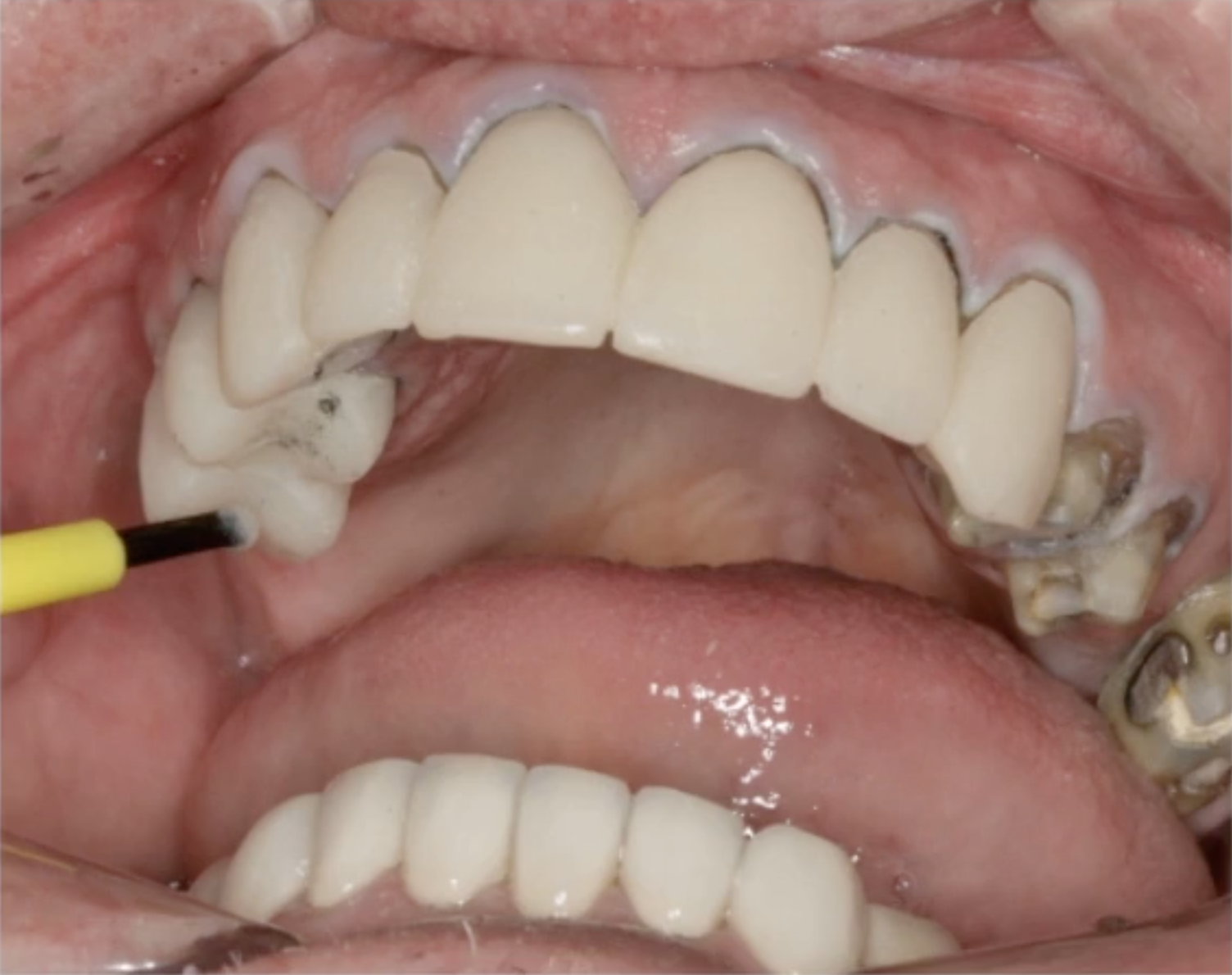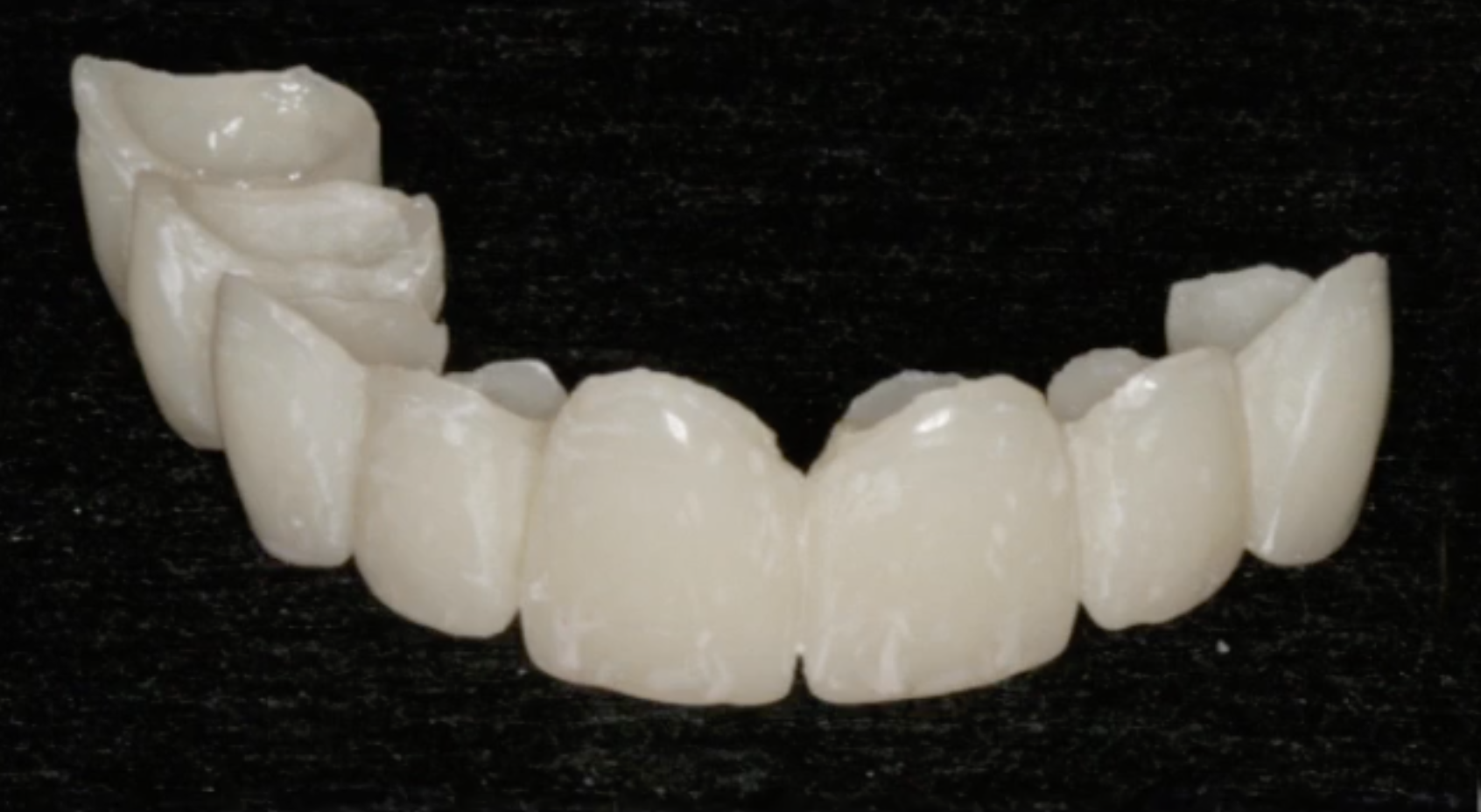- Office Hours Mon - Fri 9:00 am – 4:00 pm EST
So a quick tip when working on provisionals is probably nothing new to you, it’s something you’ve heard. It’s to follow The Dawson Academy checklists and to follow the order and to never go out of order.
If you follow the order of checking your provisionals, it’s the same order of checking your occlusion on anterior restorations. We follow the same process step-by-step.
So the first step is the centric stop on the lingual of the upper. Now that warrants that you had the lower teeth where you want them, whether they’re natural or they’re composite. Now, that allows you to position that centric stop on the upper.
Once we have that, then we look at the emergence profile next of how it comes out of the tissue. The lip closure path is critical. All of these are really involved with the neutral zone in the muscles, so the way that lower lip comes over that edge for the lip closure path is the third thing that I check.
And then we can combine the centric stop with that position of the incisal edge. That’s why you have to determine the incisal edge prior to developing the envelope of function and that lingual contour. So once we develop that centric stop then that facial contour, we can develop that lingual concavity with the envelope of function and check out that for comfort and stability.

I’m adjusting centric stops and I can add to them or I can takeaway. I want those to be exactly positioned. Once I get my centric stop, I can start adjusting my emergence profile and my lip closure path. Because I use Luxatemp or Protemp, I can fix this, I can add the bubbles, I can add with flowable composite so it makes it nice and easy.
If we don’t provide accurate provisionals to the lab, they will have to guess and the guess is never accurate. The guess is always not what we want it to be. And so we have to provide that incisal edge position, facial contour, and centric stop in the vertical dimension to the lab.
So this is the third thing and with that, we’re going to ask the patient to count 50 to 60. We’re going to look and make sure that edge is in the vermilion border, right inside that lower lip, and we’re going to ask the patient how that feels.
If a patient says that it feels too long, very often it’s not too long esthetically. It’s not the vertical position; it’s the horizontal position. So very often when the patient says it feels too long, it’s because we have to tip in, adjust in that facial emergence profile where the lower lip comes over it.
This is a post-orthodontic, post-orthognathic surgery where I’m restoring the anterior teeth. So we’re going to watch the F sounds and listen for that S sound. Then I tell them to go ahead and big smile, now count 50, 51, 52, 53.

So you can see in the picture here, once we have our centric stops, once we have our horizontal position of the incisal edge with the F position, then we can start developing our guidance. We’re going to go from the dot of the centric stop to the inside border of that incisal edge.
And you can see here, straight lines, and as we work with it, we can develop some lines that go up the marginal ridges. Notice the guidance we have on the cuspids. And only then with provisionals will I then start adjusting the gingival embrasures and the other non-functional parts of the provisional.

So we can see we’re developing the incisal embrasures so they’re not all the same, that we round them out. You can see we’re developing some texture on that provisional so when we polish it, it has a little bit of texture, a little light reflection.
And so to sum up, we can see that we’ve got:
So, again, that’s reiterating what we taught you. I hope this is a good reminder and thanks.
Monday – Friday:
9:00 am – 4:00 pm EST
Phone:
727.823.7047
We firmly believe that the internet should be available and accessible to anyone, and are committed to providing a website that is accessible to the widest possible audience, regardless of circumstance and ability.
To fulfill this, we aim to adhere as strictly as possible to the World Wide Web Consortium’s (W3C) Web Content Accessibility Guidelines 2.1 (WCAG 2.1) at the AA level. These guidelines explain how to make web content accessible to people with a wide array of disabilities. Complying with those guidelines helps us ensure that the website is accessible to all people: blind people, people with motor impairments, visual impairment, cognitive disabilities, and more.
This website utilizes various technologies that are meant to make it as accessible as possible at all times. We utilize an accessibility interface that allows persons with specific disabilities to adjust the website’s UI (user interface) and design it to their personal needs.
Additionally, the website utilizes an AI-based application that runs in the background and optimizes its accessibility level constantly. This application remediates the website’s HTML, adapts Its functionality and behavior for screen-readers used by the blind users, and for keyboard functions used by individuals with motor impairments.
If you’ve found a malfunction or have ideas for improvement, we’ll be happy to hear from you. You can reach out to the website’s operators by using the following email
Our website implements the ARIA attributes (Accessible Rich Internet Applications) technique, alongside various different behavioral changes, to ensure blind users visiting with screen-readers are able to read, comprehend, and enjoy the website’s functions. As soon as a user with a screen-reader enters your site, they immediately receive a prompt to enter the Screen-Reader Profile so they can browse and operate your site effectively. Here’s how our website covers some of the most important screen-reader requirements, alongside console screenshots of code examples:
Screen-reader optimization: we run a background process that learns the website’s components from top to bottom, to ensure ongoing compliance even when updating the website. In this process, we provide screen-readers with meaningful data using the ARIA set of attributes. For example, we provide accurate form labels; descriptions for actionable icons (social media icons, search icons, cart icons, etc.); validation guidance for form inputs; element roles such as buttons, menus, modal dialogues (popups), and others. Additionally, the background process scans all of the website’s images and provides an accurate and meaningful image-object-recognition-based description as an ALT (alternate text) tag for images that are not described. It will also extract texts that are embedded within the image, using an OCR (optical character recognition) technology. To turn on screen-reader adjustments at any time, users need only to press the Alt+1 keyboard combination. Screen-reader users also get automatic announcements to turn the Screen-reader mode on as soon as they enter the website.
These adjustments are compatible with all popular screen readers, including JAWS and NVDA.
Keyboard navigation optimization: The background process also adjusts the website’s HTML, and adds various behaviors using JavaScript code to make the website operable by the keyboard. This includes the ability to navigate the website using the Tab and Shift+Tab keys, operate dropdowns with the arrow keys, close them with Esc, trigger buttons and links using the Enter key, navigate between radio and checkbox elements using the arrow keys, and fill them in with the Spacebar or Enter key.Additionally, keyboard users will find quick-navigation and content-skip menus, available at any time by clicking Alt+1, or as the first elements of the site while navigating with the keyboard. The background process also handles triggered popups by moving the keyboard focus towards them as soon as they appear, and not allow the focus drift outside of it.
Users can also use shortcuts such as “M” (menus), “H” (headings), “F” (forms), “B” (buttons), and “G” (graphics) to jump to specific elements.
We aim to support the widest array of browsers and assistive technologies as possible, so our users can choose the best fitting tools for them, with as few limitations as possible. Therefore, we have worked very hard to be able to support all major systems that comprise over 95% of the user market share including Google Chrome, Mozilla Firefox, Apple Safari, Opera and Microsoft Edge, JAWS and NVDA (screen readers), both for Windows and for MAC users.
Despite our very best efforts to allow anybody to adjust the website to their needs, there may still be pages or sections that are not fully accessible, are in the process of becoming accessible, or are lacking an adequate technological solution to make them accessible. Still, we are continually improving our accessibility, adding, updating and improving its options and features, and developing and adopting new technologies. All this is meant to reach the optimal level of accessibility, following technological advancements. For any assistance, please reach out to
ADA CERP is a service of the American Dental Association to assist dental professionals in identifying quality providers of continuing dental education. ADA CERP does not approve or endorse individual courses or instructors, nor does it imply acceptance of credit hours by boards of dentistry.
Concerns or complaints about a CE provider may be directed to the provider or to the Commission for Continuing Education Provider Recognition at ADA.org/CERP.